Un voyage à travers le temps: à la découverte des sites artistiques et historiques le long de l’EuroVelo 8
Il y a beaucoup à voir, et il est facile de se sentir submergé par toutes les options. C’est pourquoi nous avons sélectionné quelques points forts artistiques et historiques. Considérez cela comme votre guide culturel : pendant que vous découvrez l’EuroVelo 8 aujourd’hui, vous explorerez aussi son passé. Alors, d’ouest en est, comme si vous les trouviez en suivant la route à vélo, découvrons les lieux incontournables!
France
Après le début parfait de l’EuroVelo 8 – Route Méditerranéenne ensoleillé en Espagne, avec son architecture mauresque à Almería, ses amphithéâtres romains à Tarragone et le monde surréaliste de Dalí à Figueres, vous quitterez la péninsule ibérique pour rejoindre le sud de la France.
Rouler dans le sud de la France entre l’Espagne et l’Italie est un vrai régal pour les sens, mais c’est aussi l’occasion de découvrir de belles étapes culturelles. Quelques heures après avoir franchi les Pyrénées près de Montpellier, nichée entre lagunes et végétation dense, vous trouverez la Cathédrale Saint-Pierre-et-Saint-Paul de Maguelone. Cette église romane et ancienne cathédrale semble être une île de calme, idéale après une journée de vélo ! En 2002, dix-sept vitraux bleu pâle et beige, conçus par Robert Morris et réalisés par les Ateliers Duchemin, ont été installés dans les fenêtres restaurées – un magnifique croisement entre l’ancien et le moderne.
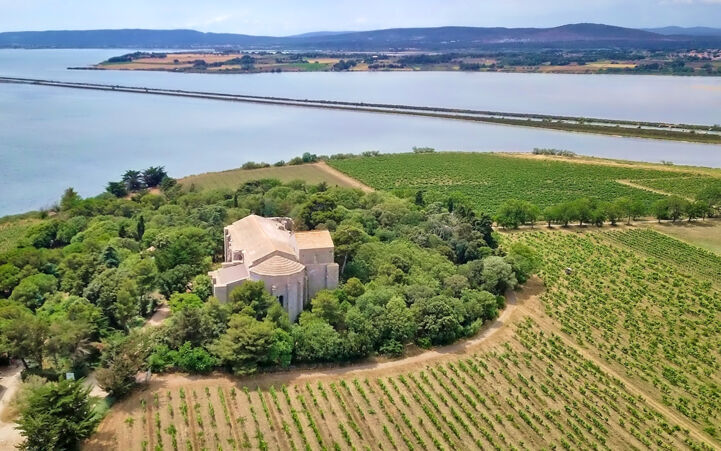
À Narbonne, juste sur la route, se trouve Narbo Via, un musée moderne qui met en valeur la ville romaine de Narbo Martius, fondée en 118 avant J.-C. Avec plus de 6 000 artefacts, dont des fresques et des monuments funéraires, Narbo Via fait revivre le monde romain!
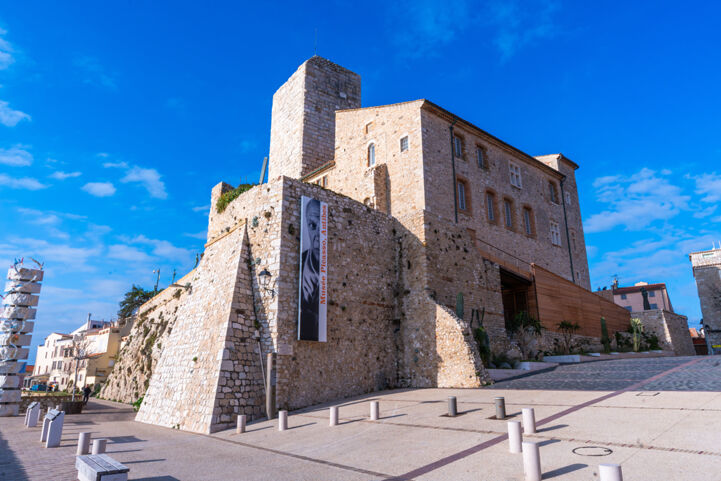
De nombreux artistes ont trouvé leur inspiration dans le sud de la France, comme Picasso, qui avait un studio à Antibes. Installé dans un château surplombant la mer, ce studio est aujourd’hui le musée Picasso. Il y a laissé des dizaines d’œuvres, accompagnées de pièces d’autres artistes modernes comme Nicolas de Staël et Germaine Richier. Le bâtiment, qui fut autrefois une acropole grecque puis un fort romain, a aussi sa propre histoire. Peut-être trouverez-vous aussi l’inspiration!
En continuant vers l’est, Aigues-Mortes est une ville médiévale parfaitement préservée, entourée de 1,6 km de remparts, qui fut autrefois la porte de la France pour les croisades. Vous pourrez visiter la Tour Constance, où vivait le roi Louis IX, ainsi que les rues bordées d’ateliers d’artistes et de galeries. La ville est aussi animée aujourd’hui qu’il y a 800 ans, et nous vous promettons que la portion française de l’EuroVelo 8 ne vous laissera pas indifférent.
Slovénie
Après plus de 700 kilomètres à travers le nord de l’Italie, en passant par Venise via la plaine du Pô avec ses collines alpines et son art de la Renaissance, vous arriverez bientôt en Slovénie, pleine de charme et d’histoire!
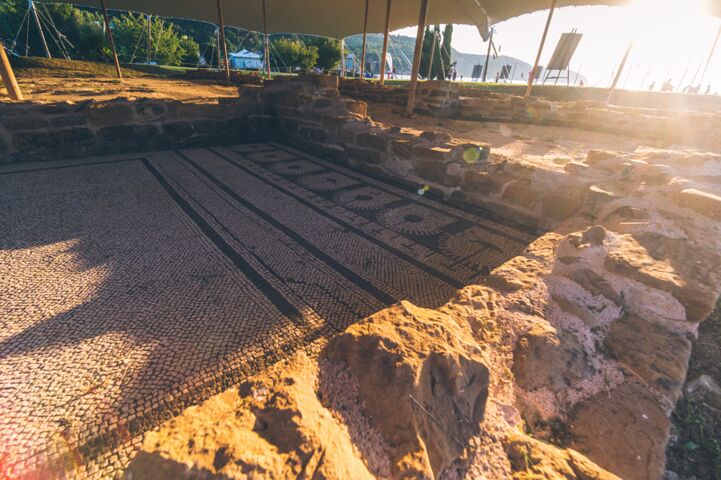
Le musée régional de Koper est un endroit idéal pour découvrir les racines culturelles de la région, puisqu’il retrace l’histoire de l’Istrie depuis la préhistoire jusqu’au XIXᵉ siècle. Ensuite, vous pourrez continuer jusqu’à Izola et le parc archéologique de San Simon, où se trouvent les ruines d’une villa romaine et d’un ancien port, offrant un aperçu du passé romain de la région avec ses murs restaurés et ses mosaïques colorées.
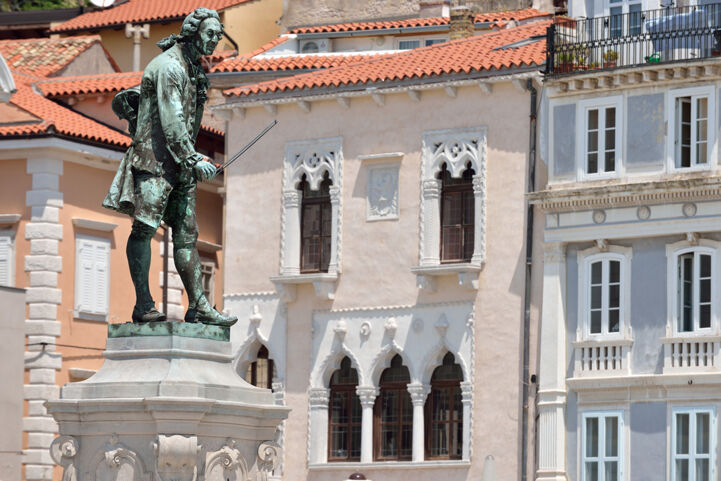
Avant d’entrer en Croatie, faites une halte à Piran, ville côtière influencée par Venise et berceau du compositeur italien Giuseppe Tartini. Perdez-vous dans les ruelles étroites, mais ne manquez pas la maison vénitienne sur la place Tartini, construite par un marchand pour sa bien-aimée locale. Sur la façade de la maison, cherchez l’inscription « Lassa pur dir » (« Laissez-les parler »), le message secret que le marchand a laissé pour sa compagne.
La portion slovène est peut-être courte, moins de 50 kilomètres, mais c’est un vrai joyau culturel !
Croatie
Le long de la côte éblouissante de la Croatie, vous trouverez de nombreuses villes riches en histoire et en savoir, mais nous vous proposons quelques étapes incontournables. Première étape: Poreč, où se trouve la basilique Euphrasienne, datant du VIᵉ siècle. Cette basilique byzantine est un chef-d’œuvre de mosaïque et classée au patrimoine mondial de l’UNESCO. Faites un saut dans le temps pour admirer ses colonnes de marbre et ses détails dorés, magnifiques exemples d’architecture chrétienne ancienne.
À Rijeka, découvrez la Torpedo, base de lancement de torpilles, où le premier torpille au monde fut testée en 1866. C’est un impressionnant témoignage de l’histoire industrielle, juste au bord de la mer. Ensuite, dirigez-vous vers l’intérieur des terres, à Smiljan, où le Centre commémoratif Nikola Tesla célèbre la vie et le travail du grand inventeur, avec sa maison natale et des expositions interactives.
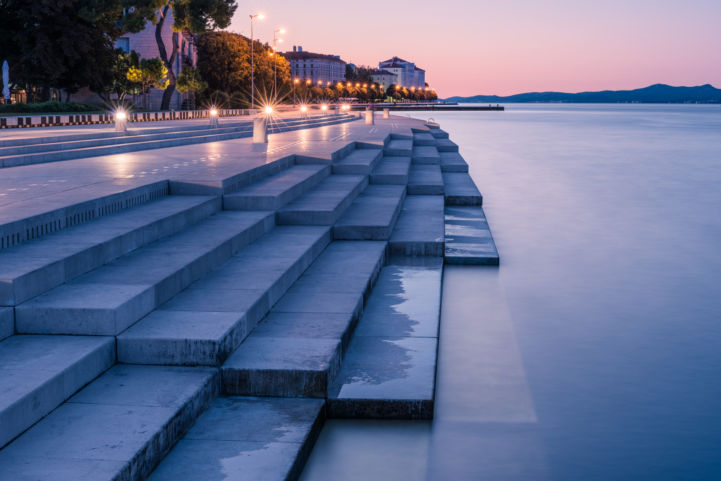
De retour sur la côte, à Zadar, le célèbre Orgues de la mer joue de la musique avec les vagues, et le Salut au Soleil s’illumine la nuit grâce à l’énergie solaire. Ces deux sites sont incontournables ! À Šibenik, explorez les forteresses de Šibenik. Ces imposants murs ont défendu la ville pendant des siècles, et les vues depuis le sommet sont vraiment inoubliables.
Prenez ensuite un jour de repos bien mérité à Split, ou explorez la ville à vélo ! Le cœur de la ville est le Palais de Dioclétien, construit au IVᵉ siècle. Mais ce n’est pas seulement un monument, c’est un lieu vivant ! Cafés, boutiques et habitations au sein de ses murs romains anciens créent un endroit unique.
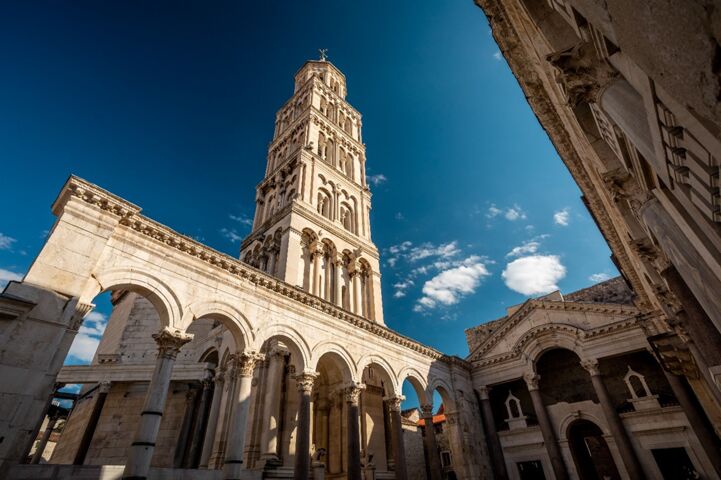
À Cavtat, découvrez la maison Bukovac, lieu de naissance de Vlaho Bukovac, l’un des peintres les plus importants de Croatie. Meubles d’époque, objets personnels et dizaines de ses peintures remplissent les pièces de cette maison magnifiquement préservée. Histoire, art et une touche d’aventure : la Croatie a tout pour plaire !
Turquie
Après avoir parcouru les côtes adriatique et ionienne et les paysages mythiques de la Grèce, l’EuroVelo 8 vous conduit en Turquie, où 500 kilomètres de côtes inoubliables vous attendent. Cette section la plus récente, ajoutée en 2019, est un véritable trésor de ruines romaines et de paysages de carte postale.
Autrefois l’un des grands centres culturels du monde antique, Pergame impressionne toujours aujourd’hui. Perchée sur une colline, son théâtre escarpé, ses temples et ses bâtiments publics sont remarquablement conservés. La vue sur la mer Égée est tout simplement épique.
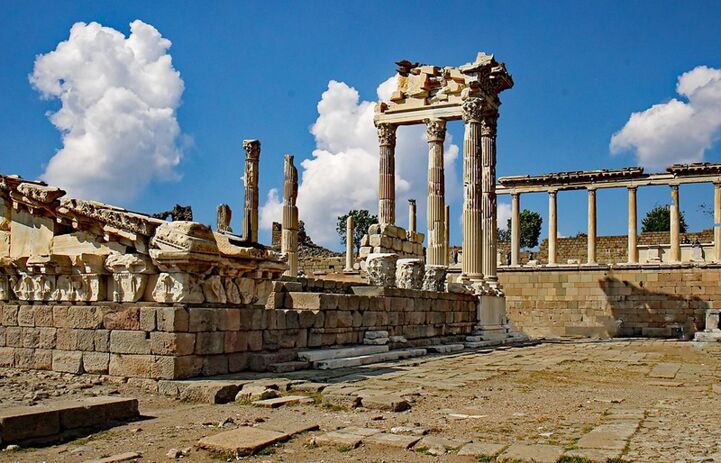
À İzmir, le musée naval abrite un sous-marin que vous pouvez visiter de l’intérieur. Une expérience ludique et interactive pour les amateurs d’histoire maritime de tout âge.
Perchée dans les collines au-dessus d’Éphèse, la maison de la Vierge Marie serait l’endroit où Marie aurait passé ses dernières années. C’est un lieu de pèlerinage et de réflexion, visité par chrétiens et musulmans. Et puis… il y a Éphèse elle-même ! L’une des villes romaines les mieux conservées au monde, avec sa façade de bibliothèque, son immense théâtre, ses temples et ses rues de marbre. Vous pourriez passer des heures (ou des jours) à explorer sans jamais avoir l’impression d’avoir tout vu.
Comme vous pouvez le constater, l’EuroVelo 8 est un véritable voyage dans le temps. Villes romaines, forteresses médiévales, musées d’art inspirants… la côte méditerranéenne regorge de merveilles culturelles. Alors, la prochaine fois que vous pédalerez sur l’EuroVelo 8 – Route Méditerranéenne, souvenez-vous que vous roulez à travers l’histoire et prenez le temps de découvrir de près les sites magnifiques qu’elle offre !
Article par Mariona Garcia-Arbós i Mata